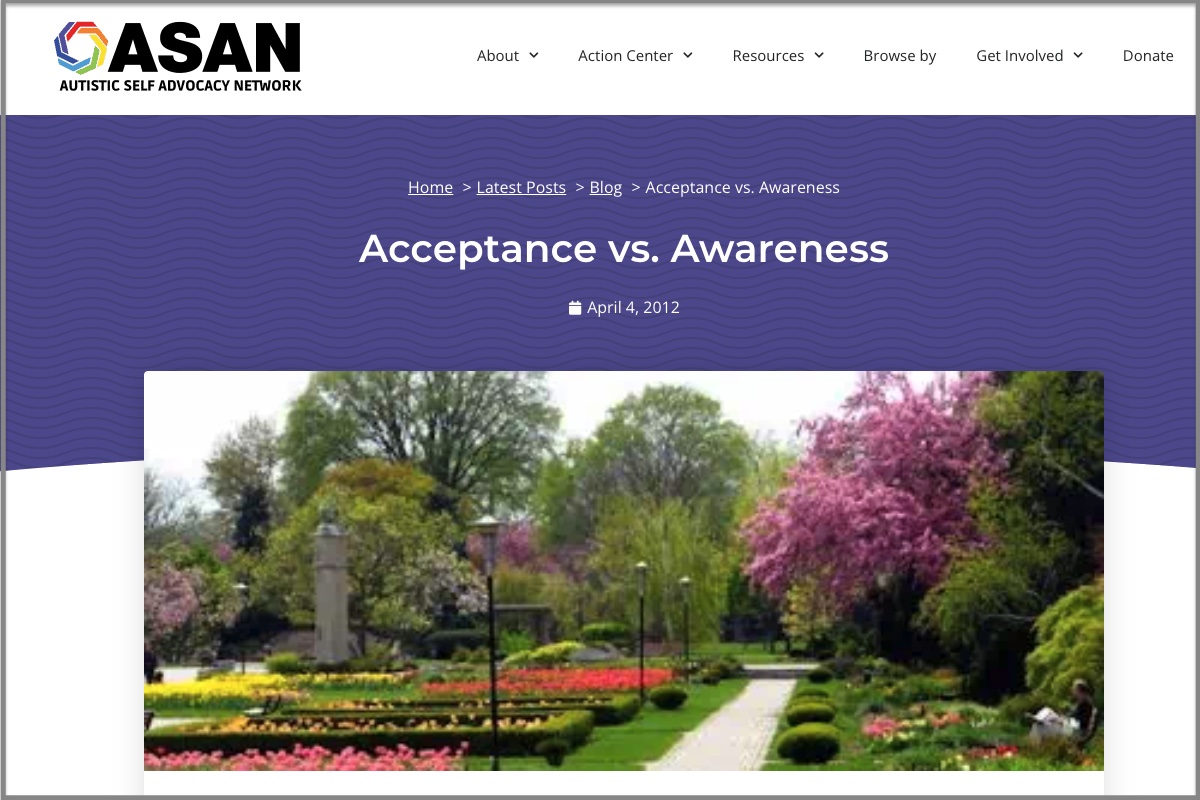In 1970, the Autism Society established April as Autism Awareness Month to help people recognize the signs of autism and learn more about what it is like to live with autism. The United Nations General Assembly designated April 2 as World Autism Awareness Day in 2008.
In 2011, the Autistic Self-Advocacy Network (ASAN) began calling April “Autism Acceptance Month.” In 2021, Autism Society of America made the same change.
What does it mean to move from awareness to acceptance? We encourage you to read these perspectives, particularly those of people with autism.
Acceptance vs. Awareness
Autism Acceptance Month vs Autism Awareness Month
Awareness month? Nah, not over here.
Autism Acceptance Not Awareness: A Perspective Shift Is Needed
Autism Acceptance Or Autism Awareness?
We are contemplating as an organization what it means to move from awareness to acceptance, not just regarding autism but mental health issues, especially as May, traditionally known as Mental Health Awareness Month, approaches. We appreciate our parent organization, the National Federation of Families, declaring May 7 – 13 Children’s Mental Health Acceptance Week.
We invite you to join us on our journey. These are some of our current thoughts contrasting awareness with acceptance:
- Awareness is often a one-time event (for example, holding a rally to build “awareness,” or reading a list of symptoms). Acceptance is ongoing – what do we all need to do so that everyone is accepted?
- Awareness often focuses on what other people think the individual with the identified condition needs to do (realize they have a problem, get over their “stigma” about treatment, seek out the services others think will help). Acceptance focuses on examining our own beliefs and prejudices and how they are standing in the way of helping develop the kind of support that people say they want.
- Awareness sometimes focuses on activities, such as wearing ribbons and listening to heart-wrenching stories, that make people on the outside looking in feel touched and involved but don’t bring about real change. Acceptance creates pathways for everyone to work together to improve systems and policies so that real change can occur.
- Awareness can focus on symptoms and what is “wrong.” Acceptance focuses on real people, recognizing their strengths, complexities and individuality. Acceptance doesn’t assume that a difference is a weakness and allows people to decide if they want support and what kind of support would be most helpful to them.
- Awareness efforts are sometimes created and implemented by people without lived experience with the conditions and sometimes without even getting the input of those with lived experience. True acceptance grows out of efforts that are led by people with lived experience.
[top photo courtesy AutisticAdvocacy.org]

